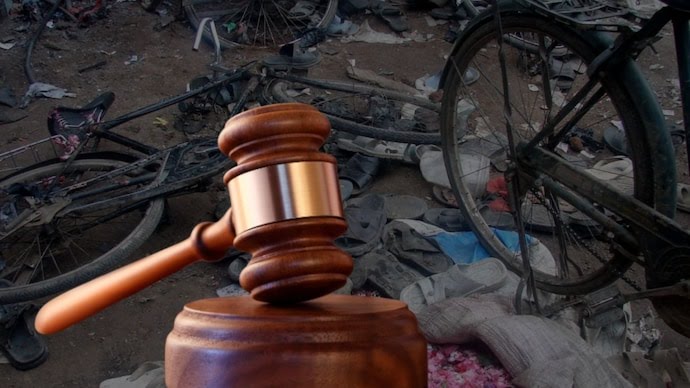Mumbai : In a significant development in the 2008 Malegaon bomb blast case, a special NIA court in Mumbai has ordered a probe against Maharashtra ATS officer Shekhar Bagde for allegedly planting fabricated evidence. The order comes after the NIA chargesheet claimed that Bagde intentionally placed traces of RDX at the residence of one of the accused.
According to a report by Aaj Tak, the National Investigation Agency (NIA) took over the case from the Maharashtra ATS in 2011. In its subsequent chargesheet, the NIA exonerated BJP MP from Bhopal, Sadhvi Pragya Singh Thakur, but alleged that ATS officer Shekhar Bagde had forcibly entered the house of accused Sudhakar Chaturvedi and planted RDX traces to falsely implicate him. Chaturvedi, a military informer, resided in Deolali Cantonment, Nashik, alongside Lt. Col. Prasad Purohit (Retd.), who was also arrested in the case on charges of supplying RDX, conspiracy, and bomb-making.
Special Judge A.K. Lahoti noted that the NIA’s probe included testimonies from a Major and a Subedar of the Indian Army, both of whom confirmed that Bagde had secretly entered Chaturvedi’s residence while he was away and planted explosive traces. They further testified before a Court of Inquiry that Bagde had urged them not to report the incident. Two days later, an ATS team raided the house and allegedly recovered RDX traces using cotton swabs.
The court observed that these actions raise serious suspicions, especially since no satisfactory explanation was provided by the ATS. It stated that the entire episode points to the possibility of “fabrication of evidence.”
In another blow to the credibility of the investigation, the court raised questions about the authenticity of medical certificates submitted by the ATS. It found that some of these certificates, allegedly documenting injuries of victims, were issued by unregistered doctors at the behest of ATS officials. The court refused to accept these documents and discovered that some certificates were tampered with. As a result, it ordered an inquiry into the issuance of fake medical records.
The court’s 1000-page verdict emphasized that both the Maharashtra ATS and the central NIA agency failed to present any concrete evidence to support their case.
This ruling has intensified political reactions, with opposition parties questioning the integrity of the investigation. Welfare Party of India called the acquittal of the accused “incomprehensible and disappointing,” while AIMIM chief Asaduddin Owaisi demanded that the Maharashtra government immediately challenge the decision in the High Court.
The court had acquitted all seven accused, including Sadhvi Pragya Singh Thakur and Lt. Col. Purohit, citing lack of evidence. The 2008 Malegaon blast killed six people and injured over 100.
With rising demands for further investigation and a possible appeal, all eyes are now on whether the Maharashtra government will act swiftly to challenge the acquittals, as it had done in the 2006 Mumbai local train blasts case.
The verdict could reshape political narratives in Maharashtra, particularly in Muslim-majority areas where dissatisfaction with the judgment is palpable. The case has revived debates around the terms “Hindu terrorism” and “Saffron terrorism,” with the BJP framing the acquittal as a vindication of its ideological stance, while the opposition highlights investigative lapses.
Whether the state government escalates the case to higher courts or orders a fresh investigation remains to be seen. For now, the court’s scathing observations on the conduct of ATS officials and the reliability of forensic evidence have sparked nationwide debate.




